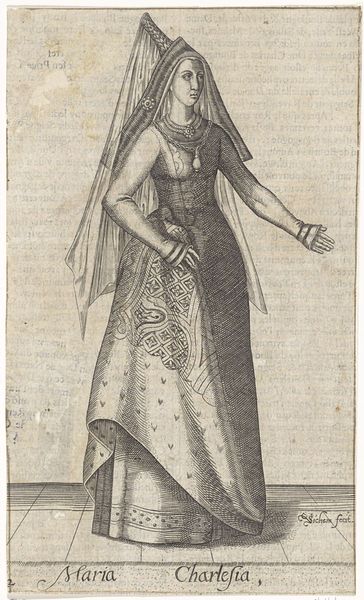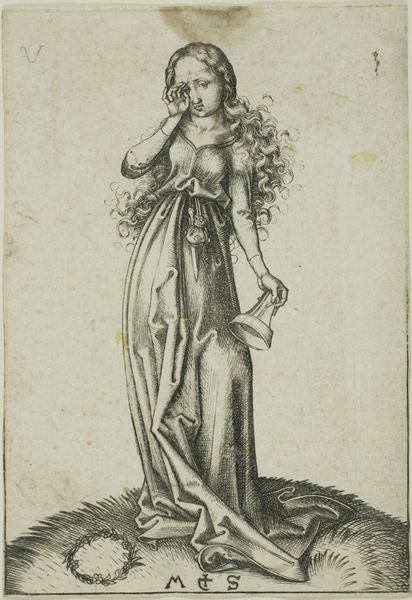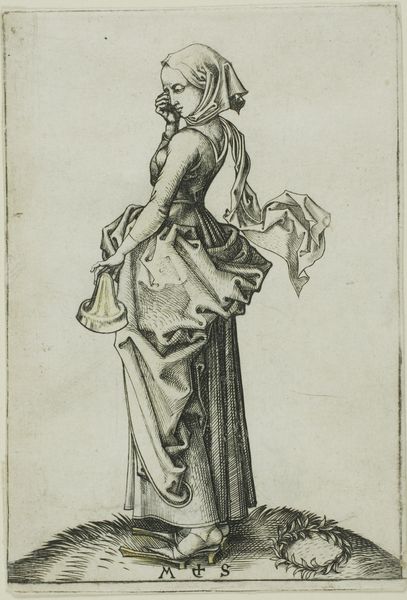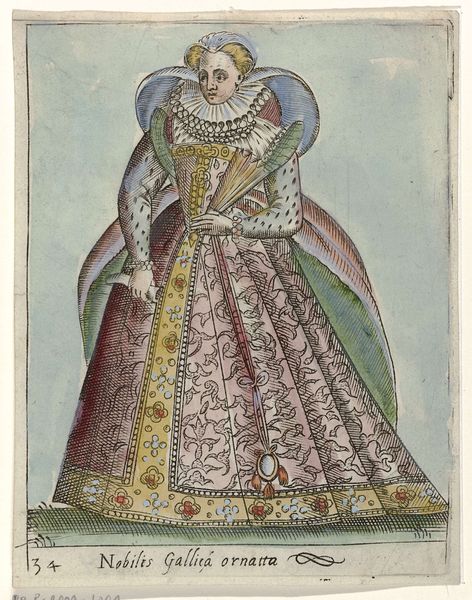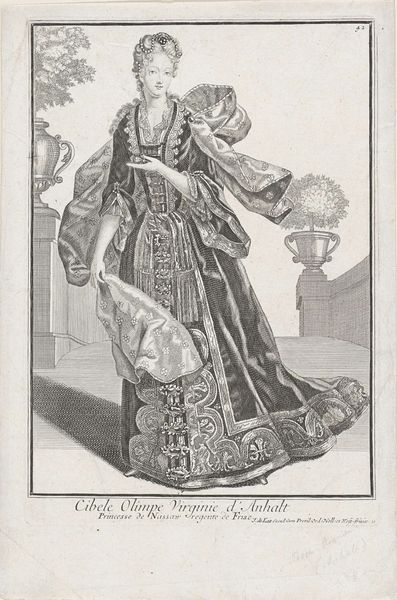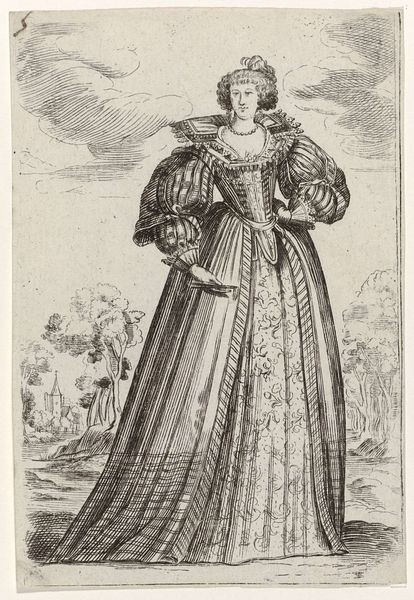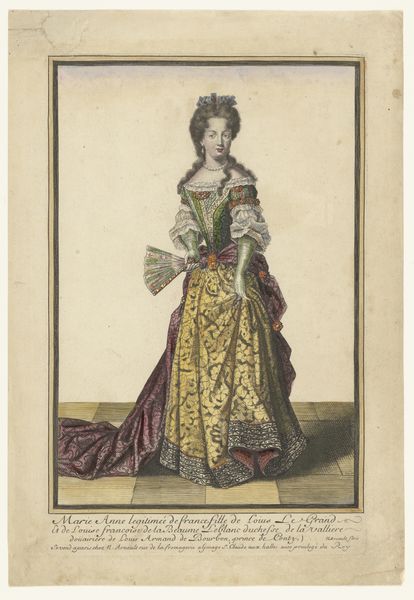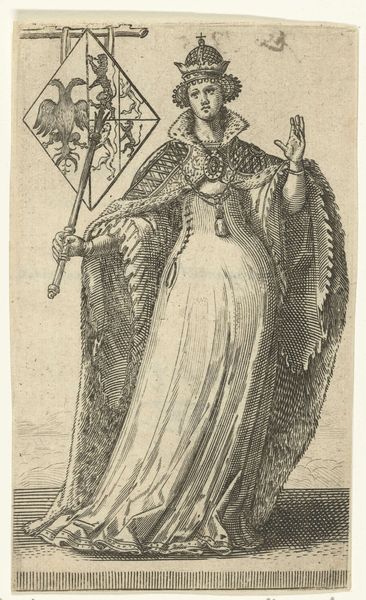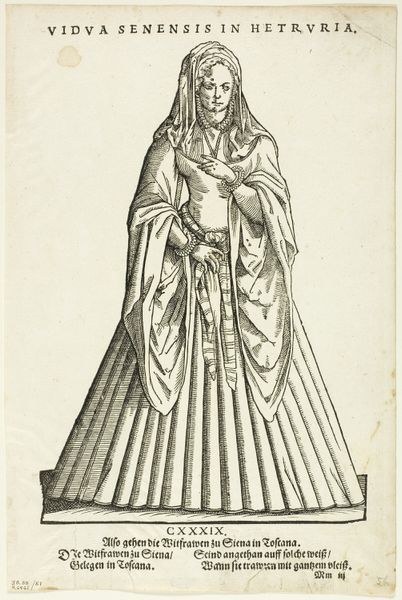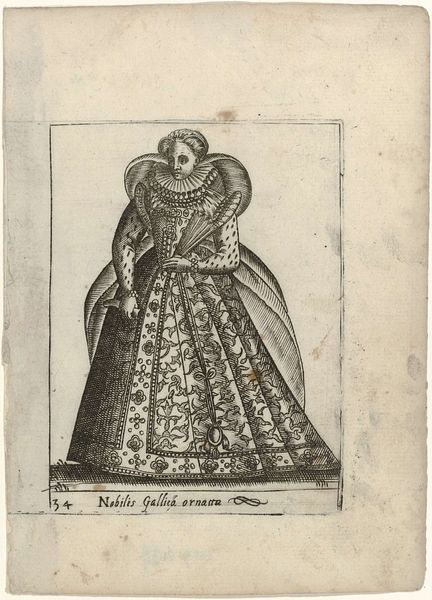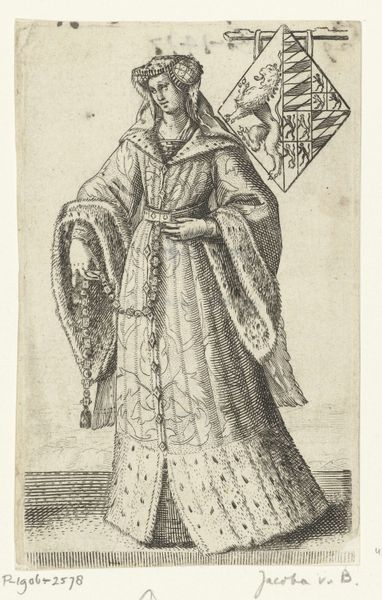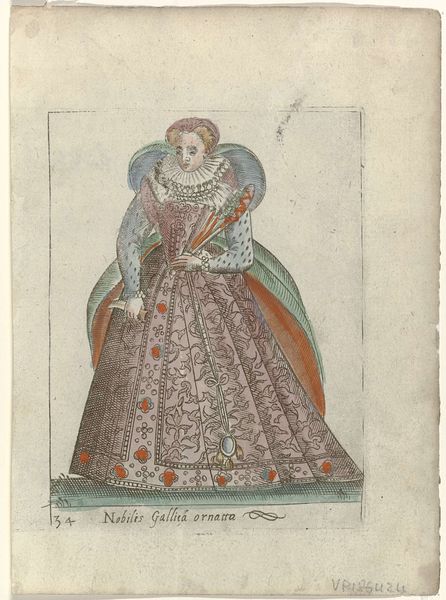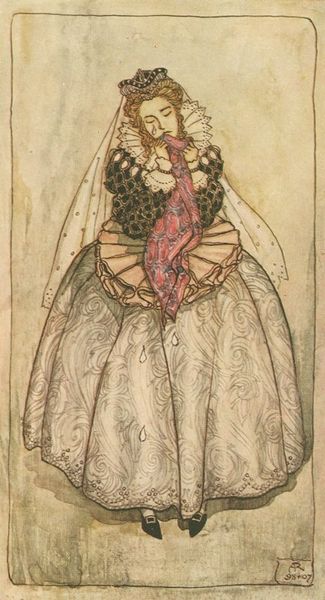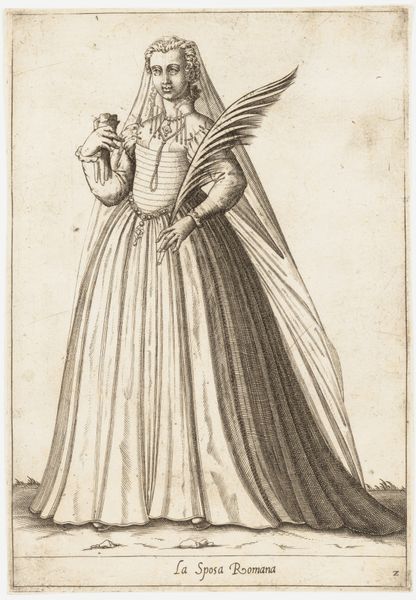
print, engraving
#
portrait
# print
#
mannerism
#
figuration
#
11_renaissance
#
history-painting
#
italian-renaissance
#
engraving
Dimensions: height mm, width mm
Copyright: Rijks Museum: Open Domain
Editor: Here we have Jost Amman’s "Adellijke vrouw in Venetiaanse dracht," or "Noblewoman in Venetian Dress," a print from 1577 housed at the Rijksmuseum. The colours strike me first - quite bold for the period, and I'm curious about that elaborate ruff framing her face. What do you see in this piece, beyond the obvious depiction of wealth? Curator: The ruff is key! Notice how it halos her head? It functions almost like a saint's aureole in earlier religious iconography. The elaborate dress, of course, speaks to status, but more profoundly, Amman is presenting an idea of Venetian identity, steeped in tradition, aspiration and possibly a hint of self-conscious performance. The Latin inscription above her head reinforces this ideal. Editor: So, you're saying she's not just a portrait of a person, but of a concept? How do the patterns play into that? Curator: Exactly! The patterns are themselves symbolic. The elaborate gold brocade at the bottom mimics the patterning higher up, reinforcing wealth and nobility across her attire. These symbols of status project Venetian nobility but there is an emphasis on display, something not commonly linked to wealth and privilege in this era, particularly when compared to a place like Florence or the Netherlands. Editor: I hadn’t considered that the dress itself makes a cultural statement. I thought the colourist choices would indicate the artist was making bold new direction for printmakers. Curator: The Renaissance revived interest in ancient symbols. Everything has a cultural memory. And an element of psychological display. It becomes less about the clothes and more about what is meant to be perceived. How did the clothing operate within society as more than a marker for rank or profession, how are clothes understood in their visual environment? Editor: That really gives me a new appreciation for how prints from this period were more than just pretty pictures. Thanks! Curator: My pleasure! Considering these prints as deliberate constructions of identity offers valuable insight into the psychology of Renaissance society.
Comments
No comments
Be the first to comment and join the conversation on the ultimate creative platform.
